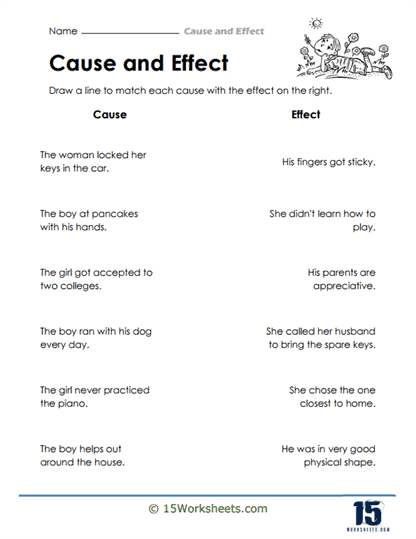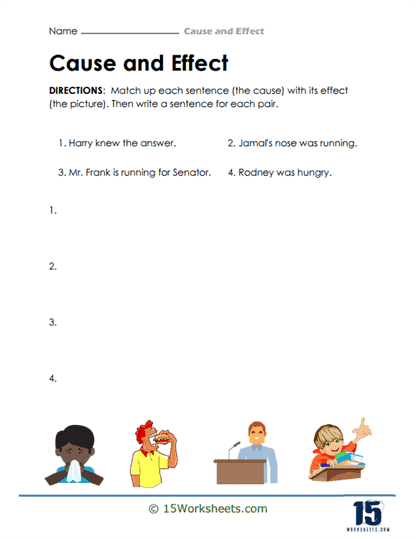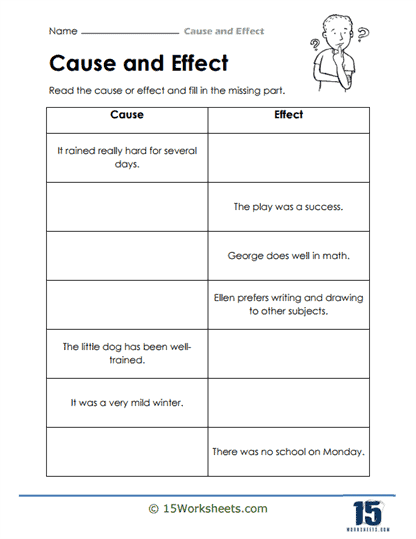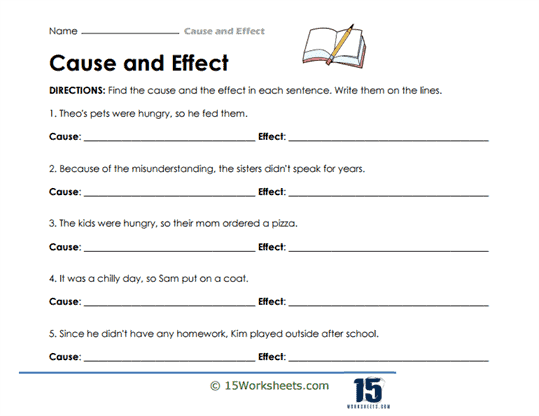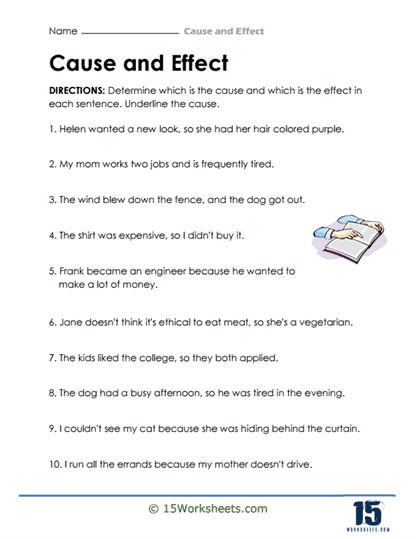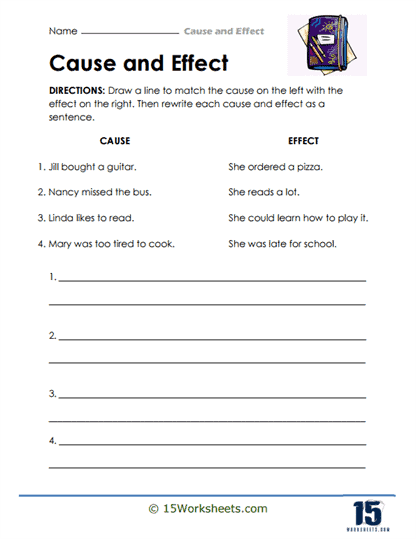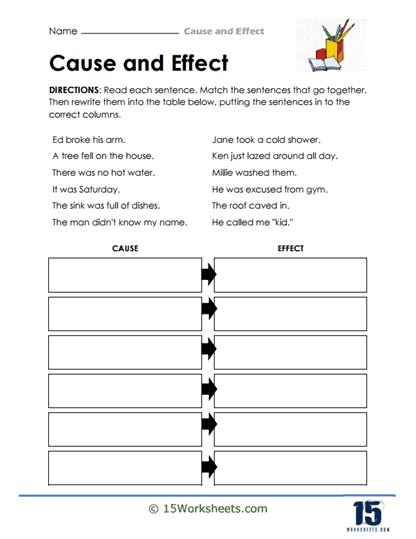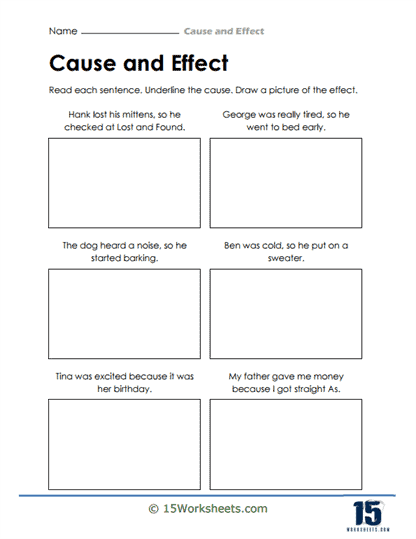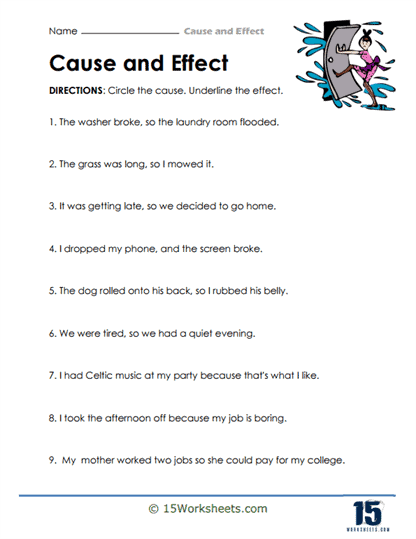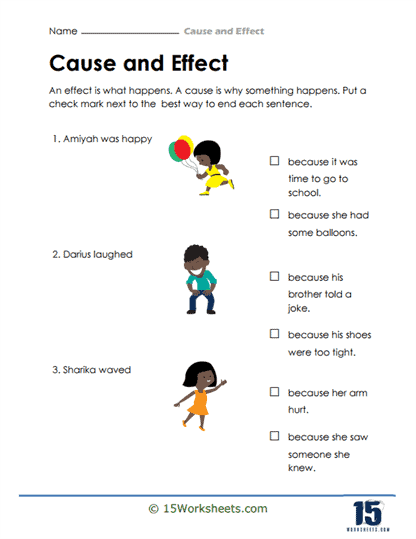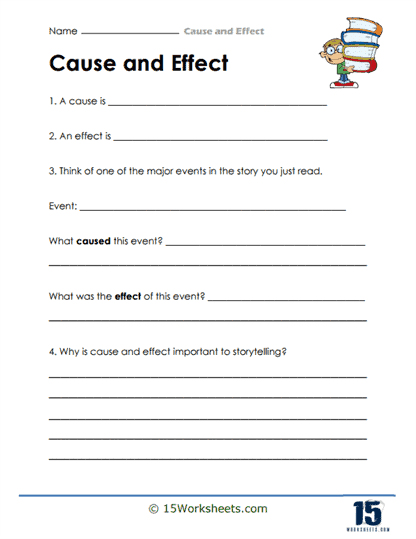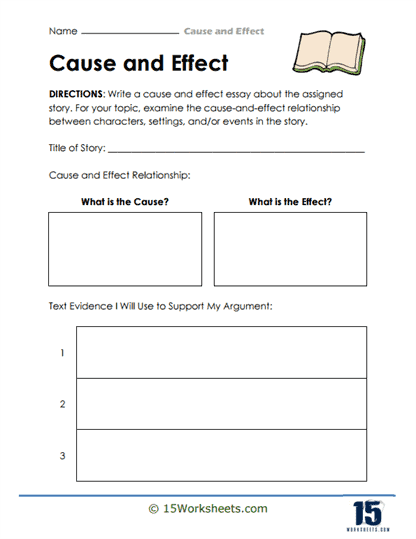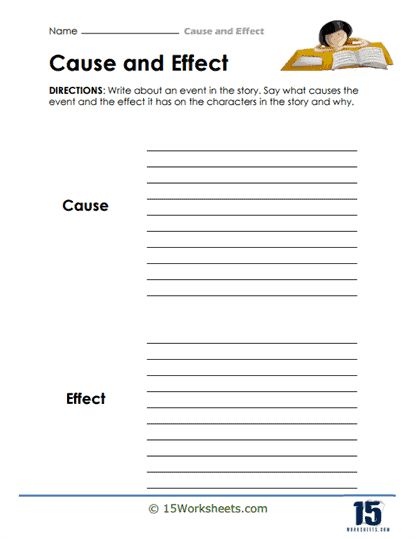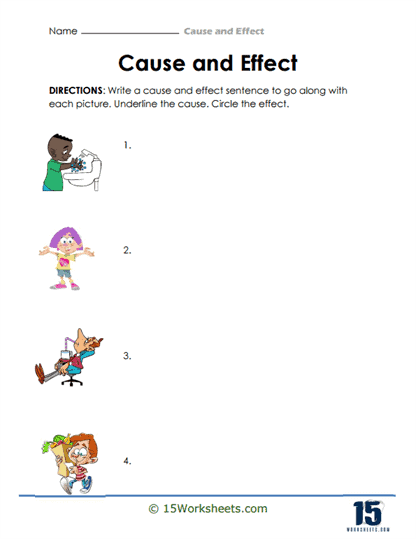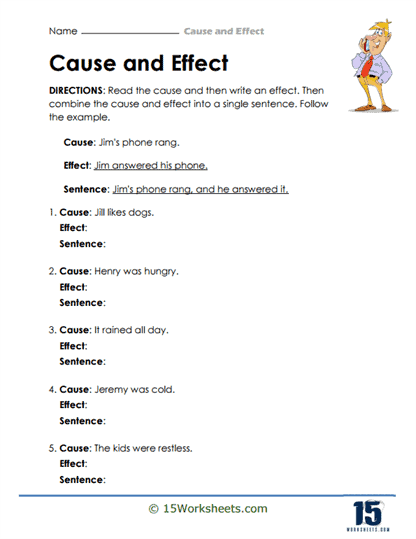Cause and Effect Worksheets
All About These 15 Worksheets
These cause-and-effect worksheets are thoughtfully crafted to assist students in grasping the essential connection between events or actions and their resulting outcomes. By engaging with these materials, students are given the tools to explore and analyze how specific causes lead to particular effects, ultimately broadening their understanding of the intricate web of relationships that shape the world around them. Designed to foster critical thinking, these worksheets feature a wide array of activities aimed at encouraging students to reflect on cause-and-effect dynamics, both in textual analysis and real-world scenarios.
One key focus of these worksheets is on helping students identify cause-and-effect relationships. This exercise requires students to read through a given text or scenario, pinpoint the cause of a particular event, and connect it to its effect. Through this process, students learn to discern the logical flow of events, enhancing their ability to make connections and recognize how one action can ripple outward to create a series of consequences. This skill is vital not only for academic success but also for real-life decision-making, where the ability to predict outcomes based on current actions can significantly influence behavior and choices.
Another engaging activity embedded in these worksheets involves matching exercises. Students are tasked with identifying patterns, recurring themes, or trends in cause-and-effect relationships and pairing a cause with its corresponding effect. This activity encourages students to look beyond isolated events and consider broader patterns that often emerge across different contexts. By recognizing these patterns, students can develop a more nuanced understanding of how cause-and-effect relationships operate on a larger scale, helping them recognize similar dynamics in other areas of study or everyday life.
These worksheets challenge students to predict outcomes. This forward-thinking activity requires students to apply their understanding of cause-and-effect relationships to forecast likely consequences of given events or actions. In doing so, students not only sharpen their ability to anticipate what might happen next but also cultivate a proactive mindset. Learning to predict outcomes is an invaluable skill, as it encourages students to think critically about the potential results of their actions, promoting responsible decision-making and helping them to consider the broader implications of their choices.
In sum, these worksheets provide students with a comprehensive platform to develop a deeper appreciation for cause-and-effect relationships. By participating in a variety of activities, students can strengthen their ability to analyze and interpret events with greater clarity, learning to recognize the complexity of the world around them. Ultimately, this understanding can empower students to make more informed decisions, as they are better equipped to anticipate the potential consequences of their actions. The critical thinking skills honed through these worksheets extend far beyond the classroom, preparing students to navigate the intricacies of cause and effect in both academic and everyday situations.
Examples of Cause vs. Effect
Cause and effect is a fundamental concept in which an event (the cause) leads to a particular outcome (the effect). Understanding cause and effect is important because it helps us to make sense of the world around us and to identify the reasons why things happen. Here are some examples of cause-and-effect relationship.
Cause: Heavy rain
Effect: Flooding
Cause: Lack of exercise and unhealthy eating habits
Effect: Obesity
Cause: Smoking
Effect: Lung cancer
Cause: Studying for a test
Effect: Getting a good grade
Cause: Skipping class
Effect: Falling behind in school
Cause: Telling a lie
Effect: Losing trust and credibility
Cause: Proper nutrition and exercise
Effect: Good health
Cause: Overuse of technology
Effect: Poor posture and eye strain
In each of these examples, there is a clear cause-and-effect relationship. The cause leads to a particular effect. Understanding these relationships can help us to predict outcomes, make informed decisions, and take action to prevent negative consequences. Students can benefit from practicing identifying cause-and-effect relationships in real-world situations, which can help them to develop critical thinking skills and make connections between events and outcomes.

